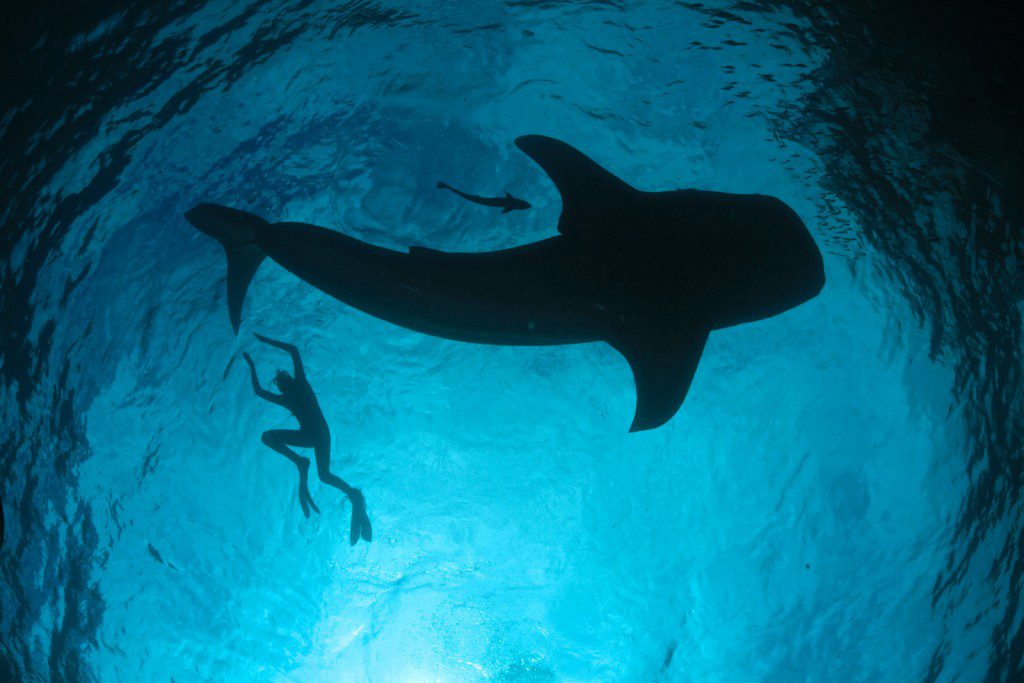News
Announcing the Bird’s Head Seascape Whale Shark ID Database
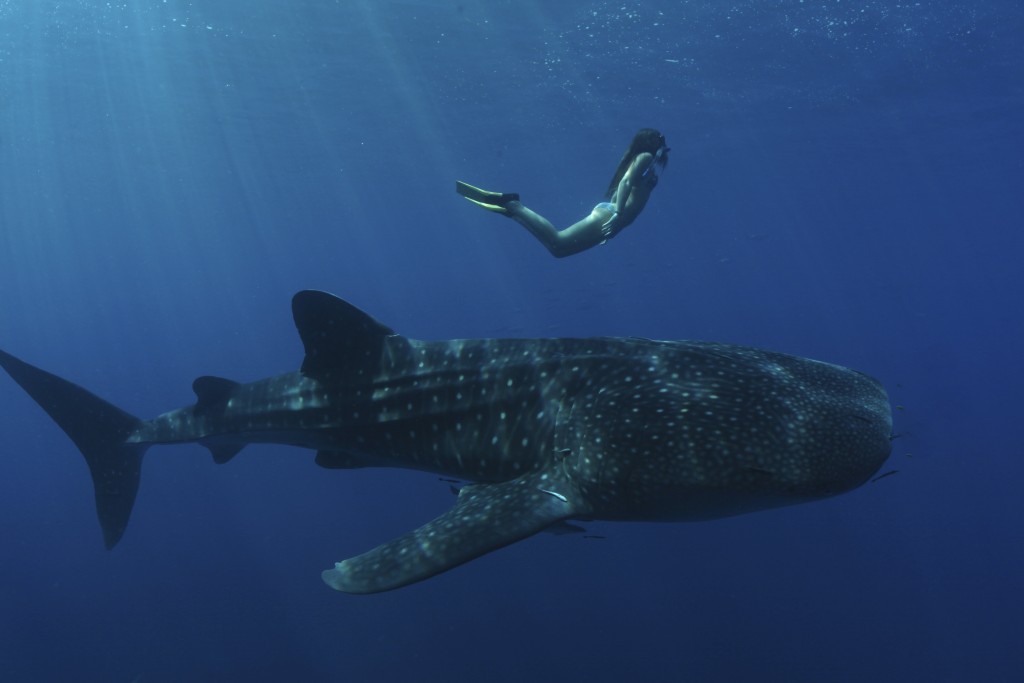
As part of our continuing efforts to make the Bird’s Head Seascape website as useful, interesting and interactive as possible, we are delighted to announce the launch of the BHS Whale Shark ID database! Created as a sister initiative to the BHS Manta ID database, this subroutine within birdsheadseascape.com is designed to allow visitors to browse the database and familiarize themselves with the known individual whale sharks of the Bird’s Head in Indonesia (including information on their size, sex, recognizeable scarring, and their known movements around the Bird’s Head), compare their own ID photos with the database, and help us learn more about BHS whale sharks by submitting photos and observational data directly to the database. This online database represents a fantastic opportunity for “citizen scientists” to contribute to our knowledge about the world’s largest fish – and we strongly encourage you all to get involved!
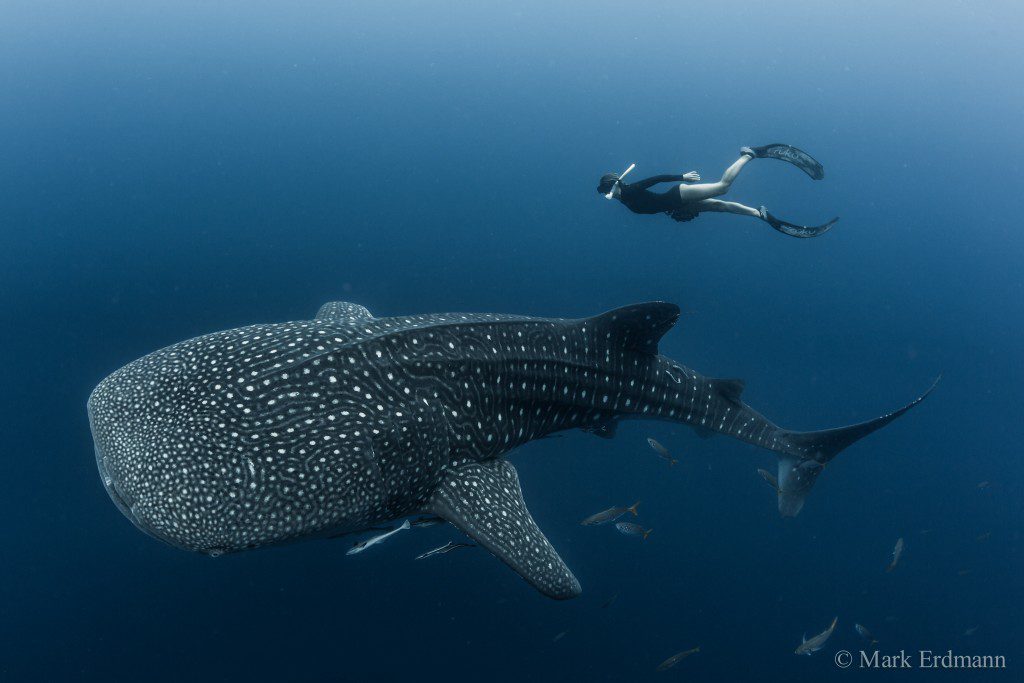
The whale shark Rhincodon typus is the world’s largest fish (reaching up to 18m in length!) and is regularly encountered in both Cendrawasih and Triton Bays in the BHS.
The database is made possible by the fact that all whale sharks have a unique pattern of spots, blotches and streaks on their bodies, and we can use these patterns to identify and track individuals – much like a fingerprint is used to identify individual humans. While these spots and streaks cover the entire body of the whale shark, in order to standardize comparisons of photos, researchers worldwide have agreed to focus photo ID efforts on the left side of individual whale sharks, specifically on the area of the body just behind the gill slits and forward of the dorsal fin. Those wishing to perfect their whale shark photo ID skills should refer to the “How it Works” section of the database, which also explains in detail how to use the site to upload your photo IDs.
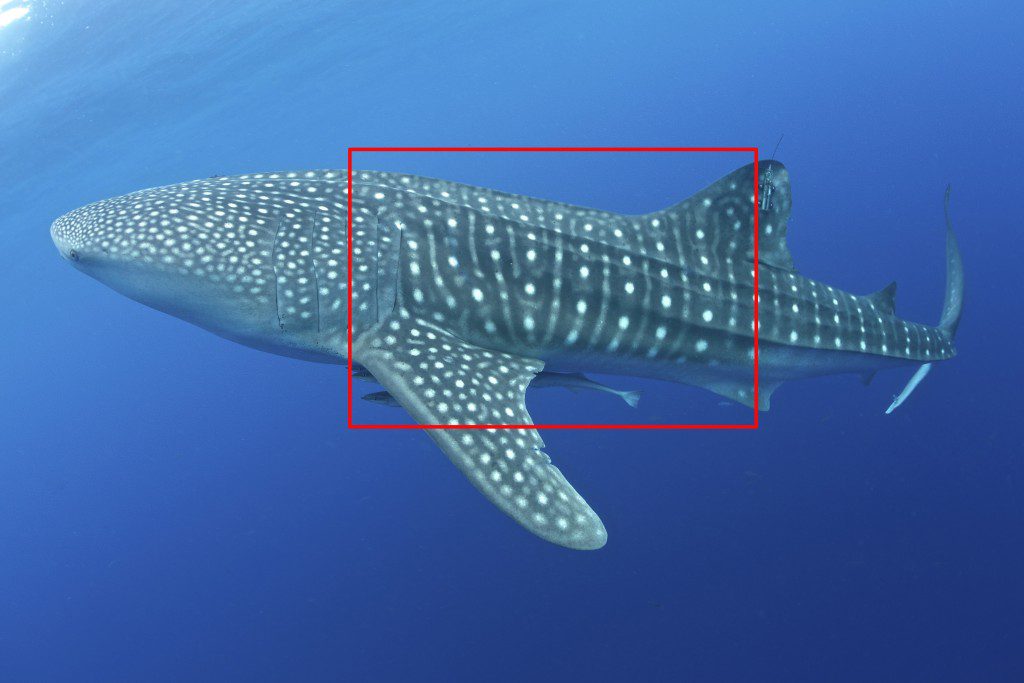
Those wishing to contribute their ID photos to the database should focus efforts on the left side of the animal in the region between the gills slits and the dorsal fin.
Whale shark-focused tourism in the Bird’s Head has been growing since 2009, with liveaboard and resort operators taking advantage of the fact that whale sharks in both Cendrawasih and Triton Bays routinely enjoy feasting on the small baitfish known locally as “ikan puri” – which means they can reliably be found each morning milling about the “bagan” lift net fishing vessels that target their favorite food. Bagan fishers will normally share a few buckets’ worth of their catch with the whale sharks, which ensures the sharks usually stick around the bagans for a few hours – allowing for prolonged tourism interactions with these behemoths.
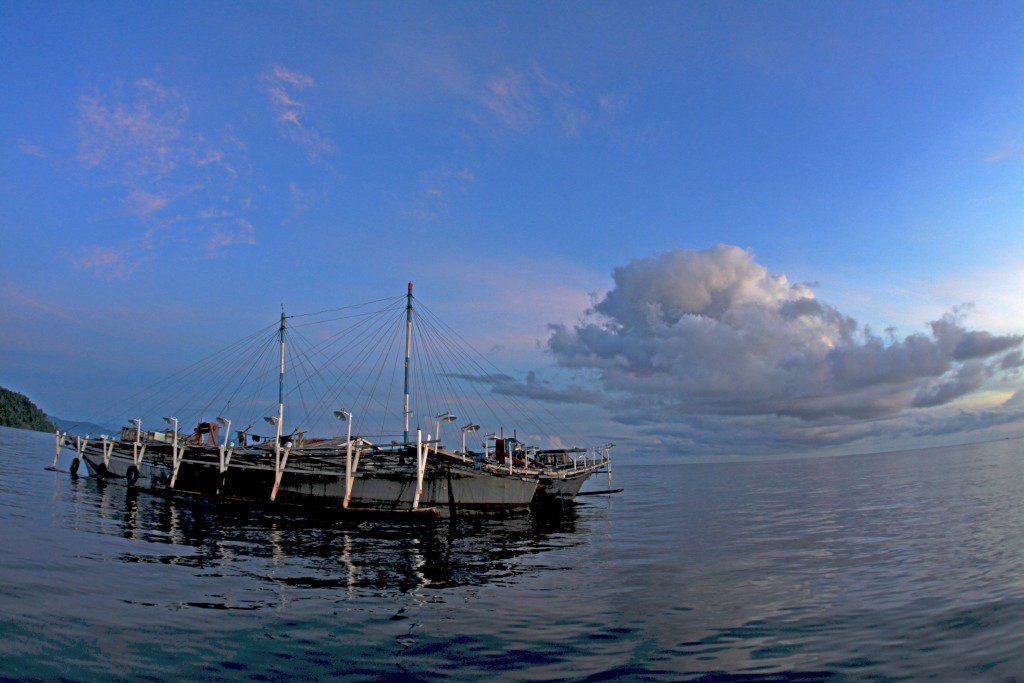
Whale sharks in the BHS are frequently found aggregating around “bagans”, lift net fishing vessels, which target the same small silverside baitfish (known locally as “ikan puri”) that are one of the whale sharks preferred food sources.
In order to better understand the whale sharks of the Bird’s Head, a number of research initiatives have been launched to study these sharks. Since 2009, the Cendrawasih Bay National Park Authority (BBTNTC), WWF-Indonesia and Dr. Brent Stewart of Hubbs Sea World Research Institute (HSWRI) have been compiling a photo ID database of Cendrawasih Bay whale sharks, as well as satellite tagging several individuals. More recently, Conservation International (CI) has been working with the BBTNTC and Ministry of Marine Affairs and Fisheries to attach finmount satellite tags to Cendrawasih whale sharks, while also collaborating with Dr. Hawis Madduppa of the Bogor Agricultural Insitute (IPB) to examine genetic connectivity of whale sharks sampled in Cendrawasih and Triton Bays. CI has also been working with the Kaimana government and local dive operators including Triton Bay Divers to compile a photo ID database of Kaimana whale sharks, and has moreover done some limited satellite tagging in Triton Bay.
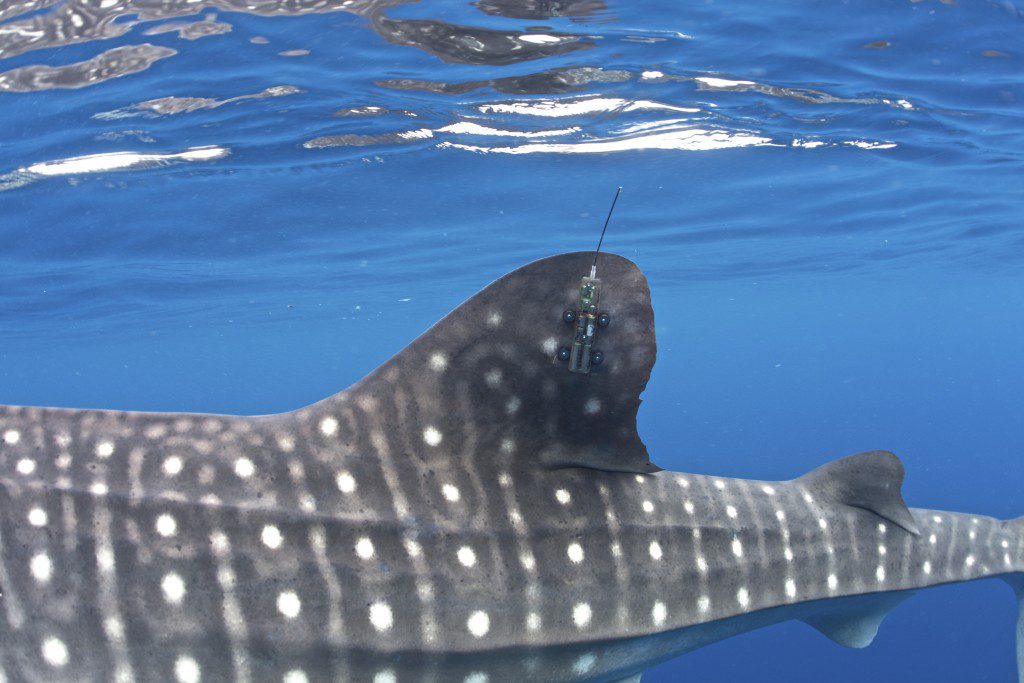
Fifteen of Cendrawasih’s whale sharks now sport finmount satellite tags, allowing conservation scientists to track their movements and learn more about their diving behaviours.
Of all these initiatives, the photo ID database is truly the foundation of all research on Bird’s Head whale sharks. By compiling and continuously updating this photo ID database, we can get an estimate of total population size, better understand seasonal patterns of movement, and determine if there is any “connectivity” between the known populations in Cendrawasih and Triton Bays. And best of all – you can be part of this important research!
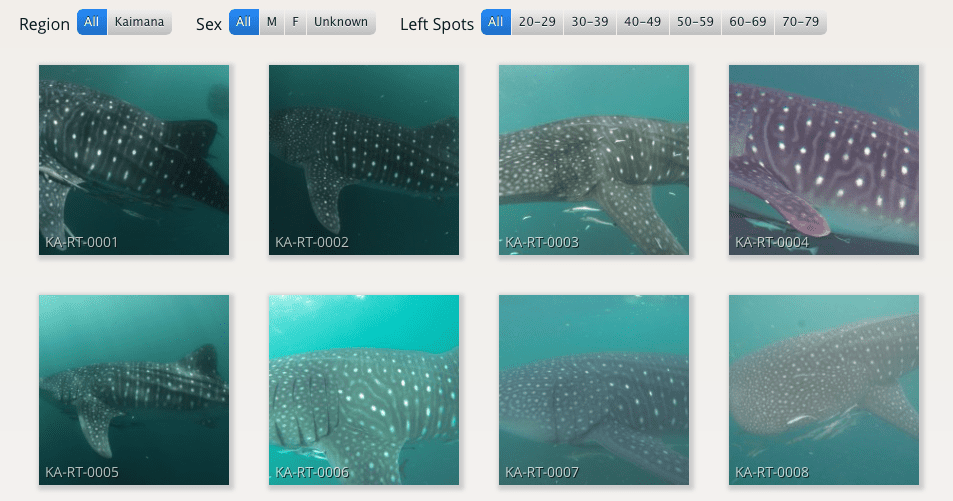
A screenshot from the database showing ID photos of 8 of Kaimana’s 14 known whale sharks (Cendrawasih now has well over 100 documented individuals). Submit your photos and grow the database!
If you’re keen to help, please explore the database and all its features to learn how to take the best possible whale shark identification photos, and submit as many photo IDs as possible! You’ll note we are now launching the Bird’s Head Seascape Whale Shark ID database with the known individuals from the Kaimana/Triton Bay region, though we intend to soon add in individuals from Cendrawasih as well. We encourage viewers to submit photo ID’s from ANYWHERE in the Bird’s Head – as we are particularly keen to investigate if there is movement of individuals around the Bird’s Head, and one of the best ways to do this is to compare photos of individuals taken in different areas. To date, the vast majority of whale shark sightings in the Bird’s Head are from Cendrawasih and Triton Bays, but they are also rarely reported from Raja Ampat, and we also have reports from the northern Bird’s Head (off the leatherback turtle nesting beaches of Abun) and off the FakFak coast. Send in your images and help us “connect the dots” on whale shark movement and behaviour in the Bird’s Head!
For more information about Bird’s head Seascape’s various projects visit www.birdsheadseascape.com.
News
Dive Worldwide introduces a pair of snorkelling-only liveaboards for 2025

In response to a growing trend amongst its customers for snorkelling-specific itineraries, specialist operator Dive Worldwide is introducing two new snorkelling trips for 2025. The new liveaboard holidays, to the Coral Triangle and Maldives, offer the same exceptional marine encounters and adventurous spirit as a traditional diving holiday, but with greater accessibility for those that are unable to dive.
Commenting, Phil North, Dive Worldwide’s Brand Manager, said: “We are thrilled to be able to offer these two fabulous adventures aimed solely at snorkelling enthusiasts. From iconic animals like whale sharks and manta rays to vibrant coral reefs, much of the magic in our oceans happens in the shallows, and these wonderful experiences are now as accessible to snorkellers as well as divers.”
Dive Worldwide has the largest programme in the UK of tailor-made and small group liveaboard and resort-based diving holidays. It features over 200 destinations worldwide, catering for beginners and experienced divers alike.

NEW SNORKELLING TRIPS FOR 2025
Coral Triangle Snorkelling Adventure
This small group cruise on Indonesia’s Coral Sea is aboard the new and environmentally-friendly Bugis, which sleeps just eight guests. Made from reclaimed teak and serving locally-sourced meals, the boat aims to have the lowest environmental impact as possible, with no single-use plastic on board, and run by a synthetic fuel made from plastic waste. The Bugis offers different itineraries throughout the year, timed for the best wildlife encounters. From May through to September, the focus is the UNESCO World Heritage Site of Komodo. Here, enjoy the kaleidoscopic beauty of shallow tropical reefs, swim with manta rays, and take on land expeditions to see Komodo dragons and Pink Beach. Between November and late March, the vessel is in Raja Ampat, the marine biodiversity capital which is also culturally rich on land. Highlights include colourful reefs bustling with hard and soft corals, and interaction with pelagic species.
Price: from £3,495pp based on 2 sharing, including 8 nights’ accommodation (1n Jakatra, 7n liveaboard), all meals, transfers and return flights from the UK. Departures from March 2025.
Maldives Snorkelling Conservation Cruise
These departures, exclusively for snorkellers, provide the ultimate marine life encounters with a focus on conservation and environmental awareness, all while sailing through the beautiful waters of the Maldives. The cruise’s dedicated itineraries focus on either manta rays or whale sharks, and are run in partnership with the Manta Trust and the Maldives Whale Shark Program. This allows snorkellers to encounter these magical pelagics on an intimate, immersive level, slipping all but silently into the waters next to them, and nimbly following them. Alongside the wonders of the water, there’s the chance to experience the local culture and participate in data collection in Citizen Science projects too.
Price: from £2,545pp based on 2 sharing, including 7 nights’ liveaboard, all meals, activities, guiding, transfers and return flights from the UK. Depart: 2 February, 2 March, 23 March 18 August, 4 October or 21 December 2025.
For further information visit Dive Worldwide (diveworldwide.com, 01962 302087).
News
Exclusive Shark Diving Adventure in the Maldives – Last Female Space Available!

Oyster Diving is offering one final opportunity for an unforgettable shark diving experience in the Maldives. From February 9-16, 2025, this exclusive trip, led by renowned marine biologist Dr. Elke Bojanowski, will take place aboard the luxurious Horizon III liveaboard. As a special offer, the last remaining female space is available with a £300 discount.
An Unparalleled Diving Experience
Diving enthusiasts will have the chance to explore some of the Maldives’ most spectacular dive sites while gaining insights into shark behavior and conservation from Dr. Bojanowski. Known for her expertise in shark research, Elke will guide divers through encounters with these magnificent creatures during the Maldives’ renowned ‘Shark Week.’

Luxury Aboard Horizon III
The Horizon III liveaboard is designed to provide the ultimate blend of comfort and adventure, featuring:
- 12 well-appointed cabins accommodating up to 22 divers
- A restaurant serving gourmet buffet meals
- A fully stocked bar
- A spa and sundecks for relaxation
- An open-air hot tub for post-dive unwinding
Top-Tier Dive Support
With a dedicated team of four experienced Divemasters, divers will benefit from an outstanding 1:6 ratio, ensuring personalized guidance and safety throughout the trip.

Limited Availability – Book Now!
This is a one-of-a-kind opportunity to dive alongside sharks under the mentorship of a leading marine biologist. With just one female space left, interested divers are encouraged to book quickly.
For more information and reservations, click here.
Oyster Diving
📧 info@oysterdiving.com
📞 +44 (0)1273 384971
🌍 www.oysterdiving.com
-

 Gear Reviews3 weeks ago
Gear Reviews3 weeks agoGear Review: SurfEars 4
-

 Blogs3 months ago
Blogs3 months agoScubaverse Christmas Gift Guide 2024: Day 4
-

 News2 months ago
News2 months agoSanta Divers take the Plunge for Charity
-

 Blogs3 months ago
Blogs3 months agoScubaverse Christmas Gift Guide 2024: Day 1
-

 Blogs3 months ago
Blogs3 months agoScubaverse Christmas Gift Guide 2024: Day 5
-

 Blogs3 months ago
Blogs3 months agoScubaverse Christmas Gift Guide 2024: Day 2
-

 Marine Life & Conservation1 month ago
Marine Life & Conservation1 month agoPaul Watson Released as Denmark Blocks Japan’s Extradition Bid
-

 Blogs3 months ago
Blogs3 months agoScubaverse Christmas Gift Guide 2024: Day 3


